Art History
Here Are 3 Things You Might Not Know About Richard Avedon’s Iconic Fashion Photograph ‘Dovima With Elephants’
"Iconic Avedon: A Centennial Celebration of Richard Avedon" is currently on view at Gagosian, Paris.
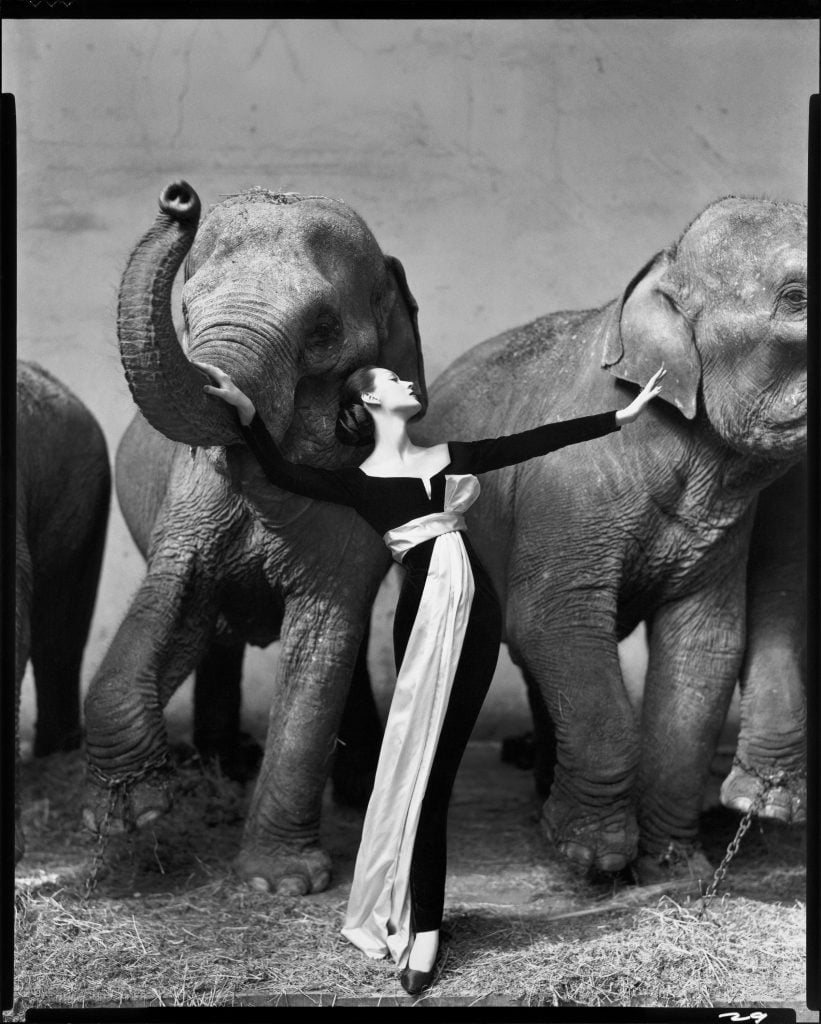
"Iconic Avedon: A Centennial Celebration of Richard Avedon" is currently on view at Gagosian, Paris.

Annikka Olsen

Every now and then one singular photograph captures the air of an era. In 1955, fashion photographer Richard Avedon shot Dovima With Elephants, Evening Dress by Dior, Cirque d’Hiver, Paris, 1955, a photograph of a statuesque model in an evening gown posed dramatically before a group of circus elephants. Upon publication in the September 1955 issue of Harper’s Bazaar, the image near-instantly became a touchstone of both fashion and photography history.
A prolific American fashion and portrait photographer, Avedon was famed for his ability to capture tension and movement within his still images—photographs that appeared in glossy magazines for decades. Many of his portraits were of the century’s most famous faces, including Marilyn Monroe, Audrey Hepburn, Tupac Shakur, and Tina Turner. Born in New York City in 1923, Avedon’s interest in photography began in childhood, joining a camera club when he was 12, and carried on to his two-year tenure in the armed forces in 1942 where he served as Photographer’s Mate Second Class in the United States Merchant Marines. He then went on to study at the Design Laboratory at the New School for Social Research under Alexey Brodovitch and began working as a freelance photographer.
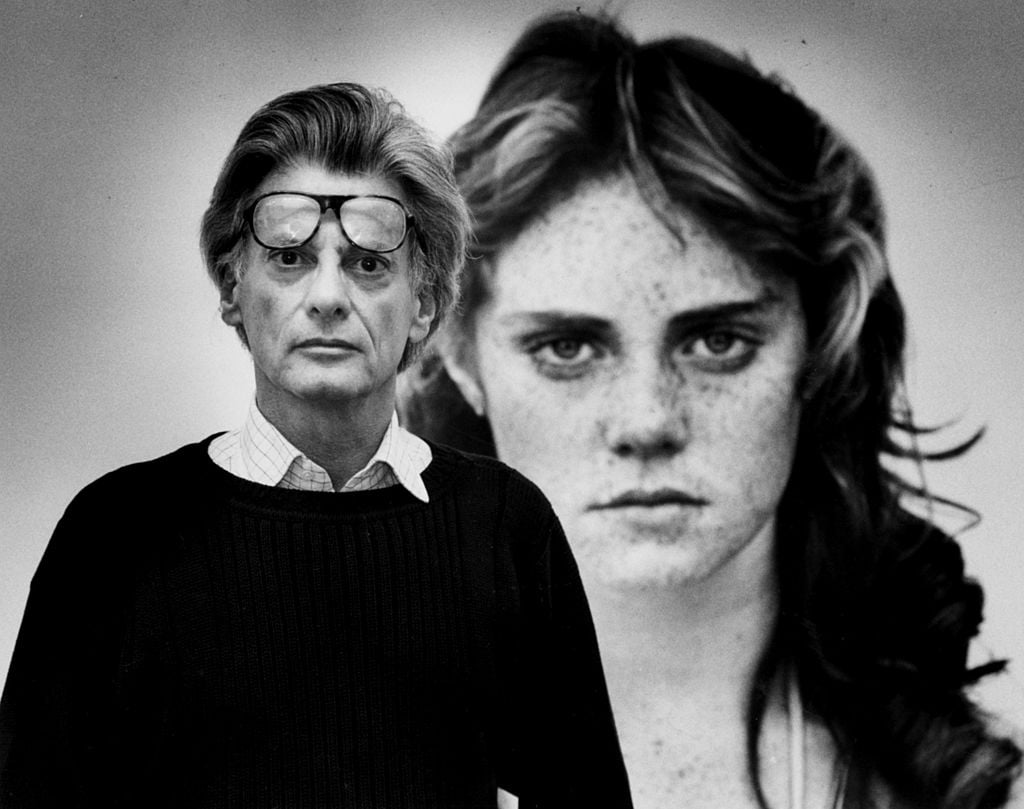
Photographer Richard Avedon next to his photograph of Sandra Bennett, 12 (1980), exhibited at the Institute Of Contemporary Art, Boston. Photo: Wendy Maeda/The Boston Globe via Getty Images.
One of Avedon’s primary freelance clients was Harper’s Bazaar. The publication, however, did not provide studio space for Avedon, leading him to improvise and experiment with then-unconventional locations for shooting like the beach, nightclubs, and city streets, choices that gave his work a reputation for innovation and originality.
In August of 1955, Avedon went to Paris on assignment for Harper’s Bazaar editor-in-chief Carmel Snow to photograph the fall fashion collections. At the same time in Paris, film director Carol Reed was shooting the film Trapeze (which was released the following year in 1956) at the Cirque d’Hiver. Seeing the elephants of the circus, Avedon immediately chose the location to take an image, later saying, “I saw the elephants under an enormous skylight and in a second I knew that I then had to find the right dress, and I knew that there was the potential here for a kind of dream image.” Dovima with Elephants was ultimately given full-page treatment and featured alongside 14 additional images from the assignment included with “Carmel Snow’s Paris Report” printed in the magazine’s September 1955 issue.
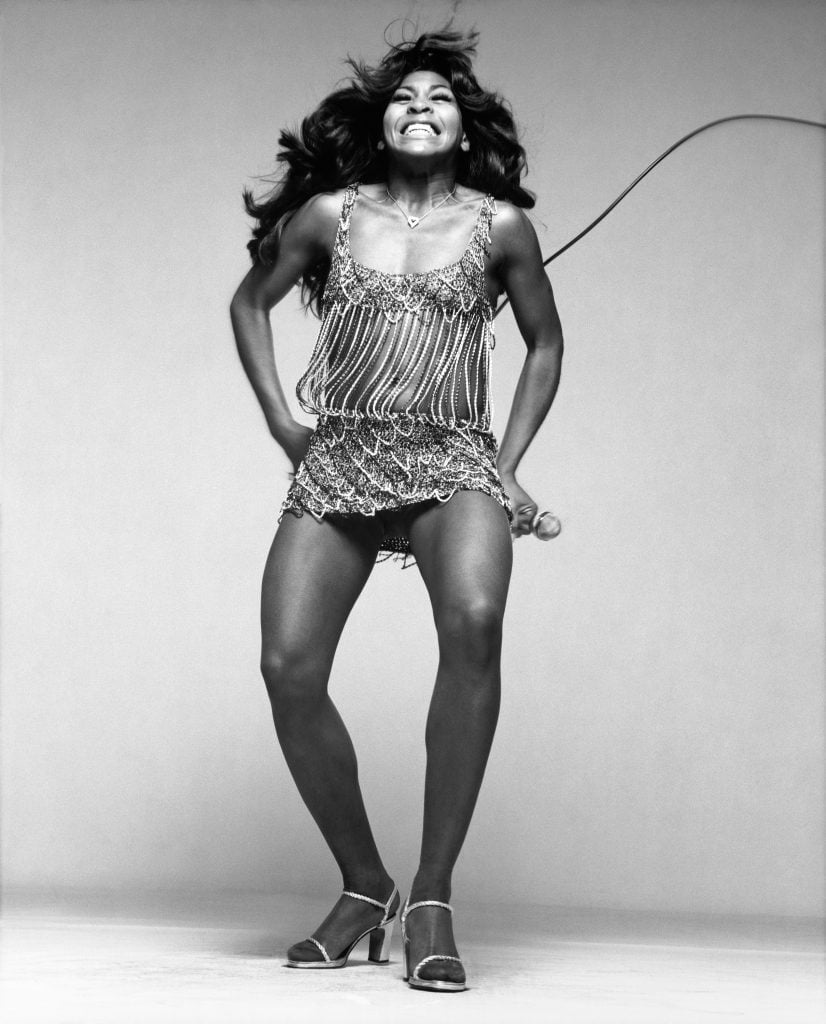
Richard Avedon, Tina Turner, performer, dress by Azzaro, New York, June 13, 1971 (1971). © The Richard Avedon Foundation.
In the decades since its creation, Dovima With Elephants has risen to icon status. Iconic is an adjective that can be used widely in Avedon’s oeuvre, as a recently opened exhibition at Gagosian, Paris, can attest, “Iconic Avedon: A Centennial Celebration of Richard Avedon.” The exhibition includes some of Avedon’s most recognizable works and emphasizes his skill at capturing each of his subject’s unique energy and personality.
In homage to the photographer’s cultural influence and marking the 100 years since his birth, we took a deep dive into the inimitable Dovima With Elephants and found three things you might not know about the iconic image.
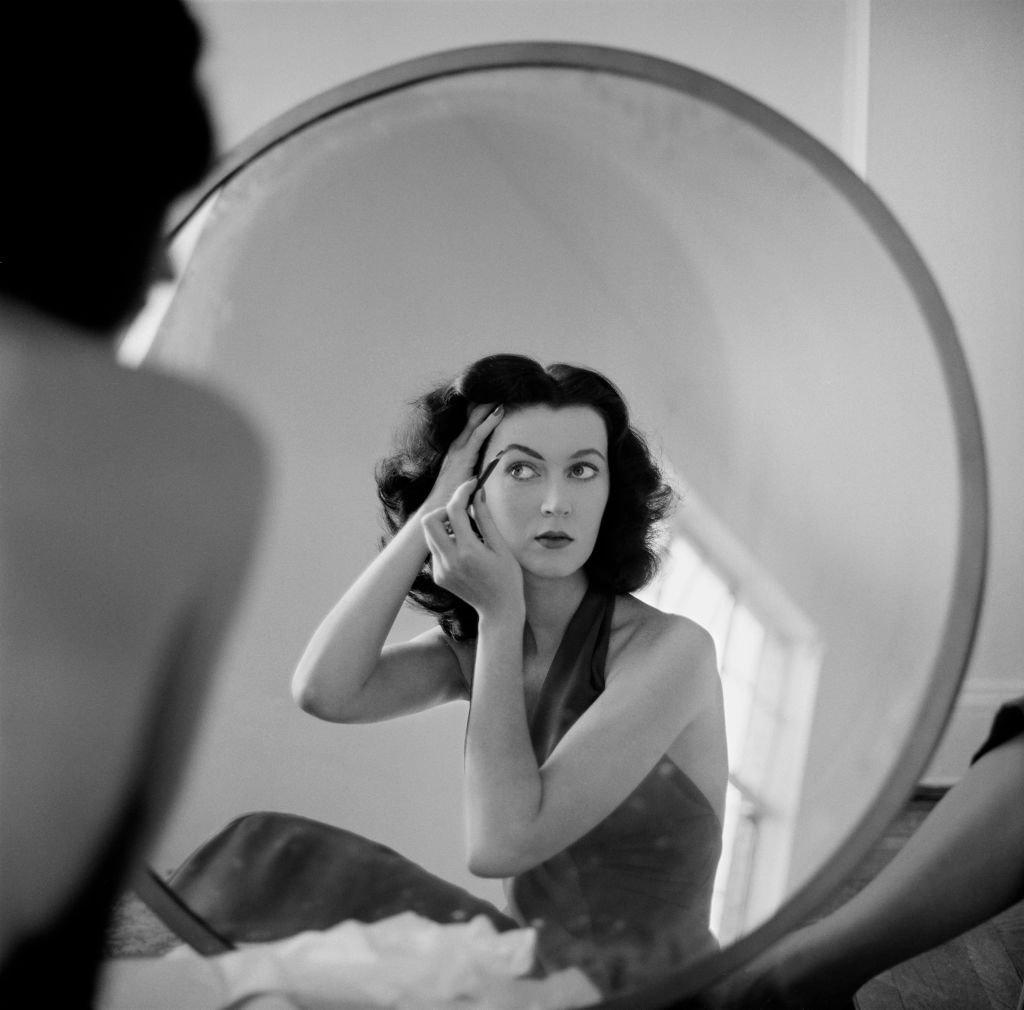
The model Dovima (1959). Photo: Tony Vaccaro/Getty Images.
Though the model used for the photograph, Dovima, is labeled a “supermodel” today, she was working several decades before the term was coined and popularized. Born Dorothy Virginia Margaret Juba, she created her moniker by taking the first two letters of the first three of her given names. She was discovered by a Vogue editor on a New York City sidewalk, and within days began working with some of the top fashion photographers of the decade, including Irving Penn, Horst P. Horst, and Richard Avedon—the latter of whom she continued to work with throughout her career. Dovima worked with nearly every major fashion house, from Dior to Balenciaga, and she was featured on the covers of Harper’s Bazaar and Vogue more than a dozen times collectively as well as other high-profile magazines, and at her height commanded 60 dollars an hour—compared to the average top rate of 25 dollars an hour—earning her a second moniker: the Dollar-a-Minute Girl. She even made a comic appearance in the 1957 hit film Funny Face, starring Audrey Hepburn and Fred Aistare, playing Marion, a parody of a model with sharp looks but dimmed intelligence. Dovima’s success did not last, however, and she faced career hardship beginning in the 1960s before she left New York City in the 1970s to live with her parents in Florida, even taking work as a hostess in a local pizza parlor, before dying in relative obscurity in 1990.
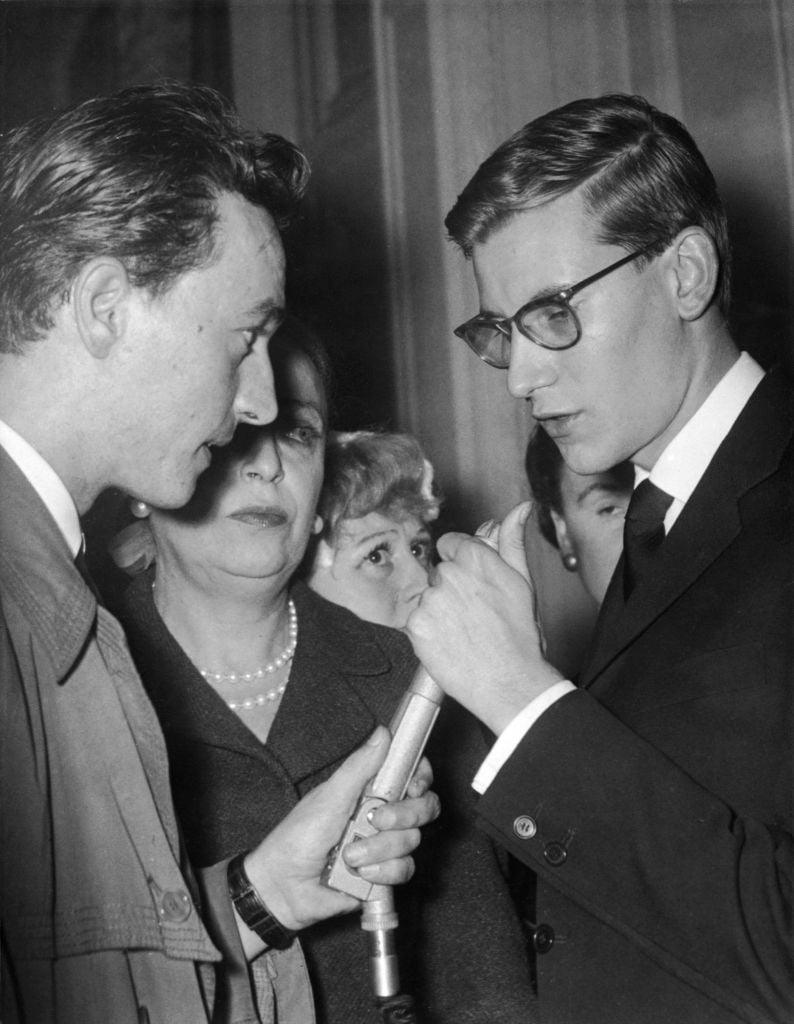
French fashion designer Yves Saint Laurent giving his first interview since succeeding the late Christian Dior, to a radio reporter in Paris, in 1957. Photo: Keystone/Hulton Archive/Getty Images.
The dress that Dovima dons in Avedon’s iconic image is itself reflective of a seismic moment in fashion history. Though labeled as a piece by Dior, the dress was the very first design made for the fashion house by another now-famous designer by the name of Yves Saint Laurent. The then-19-year-old designer had for the previous year been working with Christian Dior, but due to his lack of professional experience had been relegated to smaller design projects. The dress was among the initial sketches he was permitted to submit for the House of Dior’s couture collection, which ultimately led to more designs with each subsequent season. Laurent and Dior’s artistic sensibilities were remarkably similar, and at the age of 21—following Dior’s untimely death—Laurent found himself as head designer. Later, in 1961, he founded his own eponymous fashion house, however, his early designs for Dior remain an integral part of the brand’s heritage and DNA.
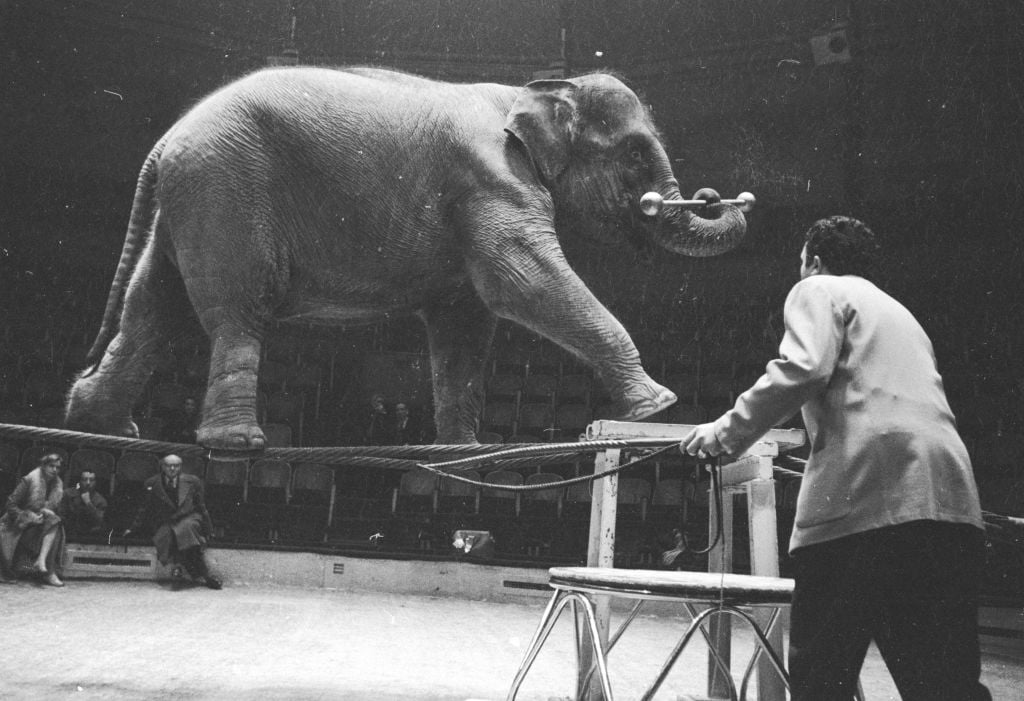
Elsie, the first elephant in the world trained to walk a tightrope (Paris, 1955). Photo by John Sadovy/BIPs/Getty Images.
In 2010, Dovima With Elephants was included in “Avedon: Photographs from the Richard Avedon Foundation” sale held at Christie’s Paris. It realized $1,153,011 and set the auction record for the photographer. Interesting to note as well, it sold to the Maison Christian Dior, highlighting its significance in both its artistry and fashion history. The image again appeared at Christie’s New York in 2020 in the “One: A Global Sale of the 20th Century” sale and broke the previous record, achieving $1,815,000. Situated at the intersection of fashion and fine art photography, these auction results emphasize the enduring relevance and allure of Avedon’s Dovima With Elephants.
More Trending Stories:
A Case for Enjoying ‘The Curse,’ Showtime’s Absurdist Take on Art and Media
Artist Ryan Trecartin Built His Career on the Internet. Now, He’s Decided It’s Pretty Boring
I Make Art With A.I. Here’s Why All Artists Need to Stop Worrying and Embrace the Technology
Sotheby’s Exec Paints an Ugly Picture of Yves Bouvier’s Deceptions in Ongoing Rybolovlev Trial
Loie Hollowell’s New Move From Abstraction to Realism Is Not a One-Way Journey